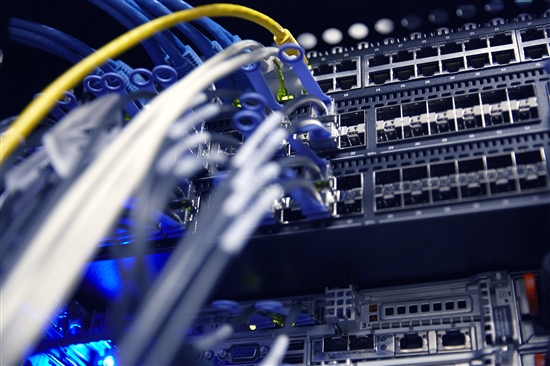Go ahead, network managers. Give yourselves a pat on the back. You do yeoman’s work to ensure that everyone in your organization can communicate efficiently and securely on a daily basis.
You deal with the exponential increase in user devices requiring access to the enterprise network. This influx presents an unprecedented burden on the infrastructure and an ongoing threat to security. In addition, applications such as Microsoft Lync and cloud services such as Salesforce.com and SAP Cloud are changing network traffic patterns and raising concerns about network control.
Let’s add to the mix the fact that network architectures are inherently complex with multiple tiers, multiple operating systems and multiple CLI’s. Core and aggregation switches are managed separately and operate independently from access switches. And, when changes or upgrades are needed, every switch needs to be manually reconfigured.
It’s a tough job but somebody has to do it. I’m just thankful that somebody isn’t me.
The Dell Networking C9000 delivers simplicity
IT professionals seeking a better way to satisfy their network requirements while reducing administrative headaches should investigate the new Dell Networking C9000 series. The C9010 network director and C1048P rapid access nodes are the first Dell Networking products based on a unified architecture that will change how organizations build and manage their mid to large size campus networks and small to mid-size data centers.
Let’s face it- A significant chunk of an organization’s investment in separately managed core and access switches is going to waste. Access switches are being configured to support many functions when their job is to simply shuttle traffic to another layer in the network. These edge switches have significant operational overhead, however all of the functionality that is really needed is access-based security, QoS, PoE/PoE+ and simple loop detection/prevention. The rest of the functions can be managed at the network core.
Dell’s new architecture collapses traditional network layers. The C9010 modular switch acts as the central director of the network. The C1048P rapid access nodes are 1Ge or 10Gbe edge devices that can be stacked and can be connected to two C9010 switches for redundancy. Once the access node is connected to the C9010, it gets its configuration and starts functioning. Administrators can reconfigure and update scores of devices from a single location rather than having to manually adjust each unit separately. Central control also lets managers simultaneously apply quality of service and security policies across the network.
Initial response from Dell customers indicates that they are very impressed by the design and capabilities of The C9010. Maurizio Davini, CTO at the University of Pisa states “We believe that the new C9000 platform from Dell is very innovative and will help us better manage our evolving campus network and reduce administrative time significantly”. Industry experts have also been generous in their praise including Network Computing which named the C9000 as the “new product of the year-hardware category.” And, IT Pro concludes it’s very favorable review of the C9000 by stating that the system “allows businesses to push their network to the edge but manage everything centrally and with the chassis 100GbE ready out of the box, it represents a solid, long-term investment.”
Interoperability and investment protection
In order to insure that customers maintain network integrity and maximize existing investments, Dell Networking supports open and heterogeneous standards. Cisco switches, for example, can work seamlessly in a Dell C-Series switch environment when properly configured. Dell has developed deployment guides that discuss a variety of network deployment scenarios and provide step-by-step instructions and the commands required to build each setup.
Not only can organizations retain their investment in existing switches but they can also integrate a number of Dell switches including the Dell N-Series. In a hybrid configuration, the C9010 can centrally manage all of the C1048P rapid access nodes or Dell N2000 and N3000 switches while interoperating with competitors’ switches. Over time, as traditional switches reach end of life, they can be replaced with C1048Ps or Dell N-Series systems. Moving forward, any new Dell Networking products that support IEEE 802.1br would be candidates to be part of a C9010 network deployment.
Summary
I haven’t mentioned that the C9000 is based on a future-ready architecture that is software defined, multi-rate and granular, but let’s save that for a future blog. Today’s commentary was hopefully a good start for network administrators who are investigating network upgrades. And just to reiterate- the C9000 series will allow you to rapidly deploy new applications, improve security, and simplify network management while reducing operating costs.

